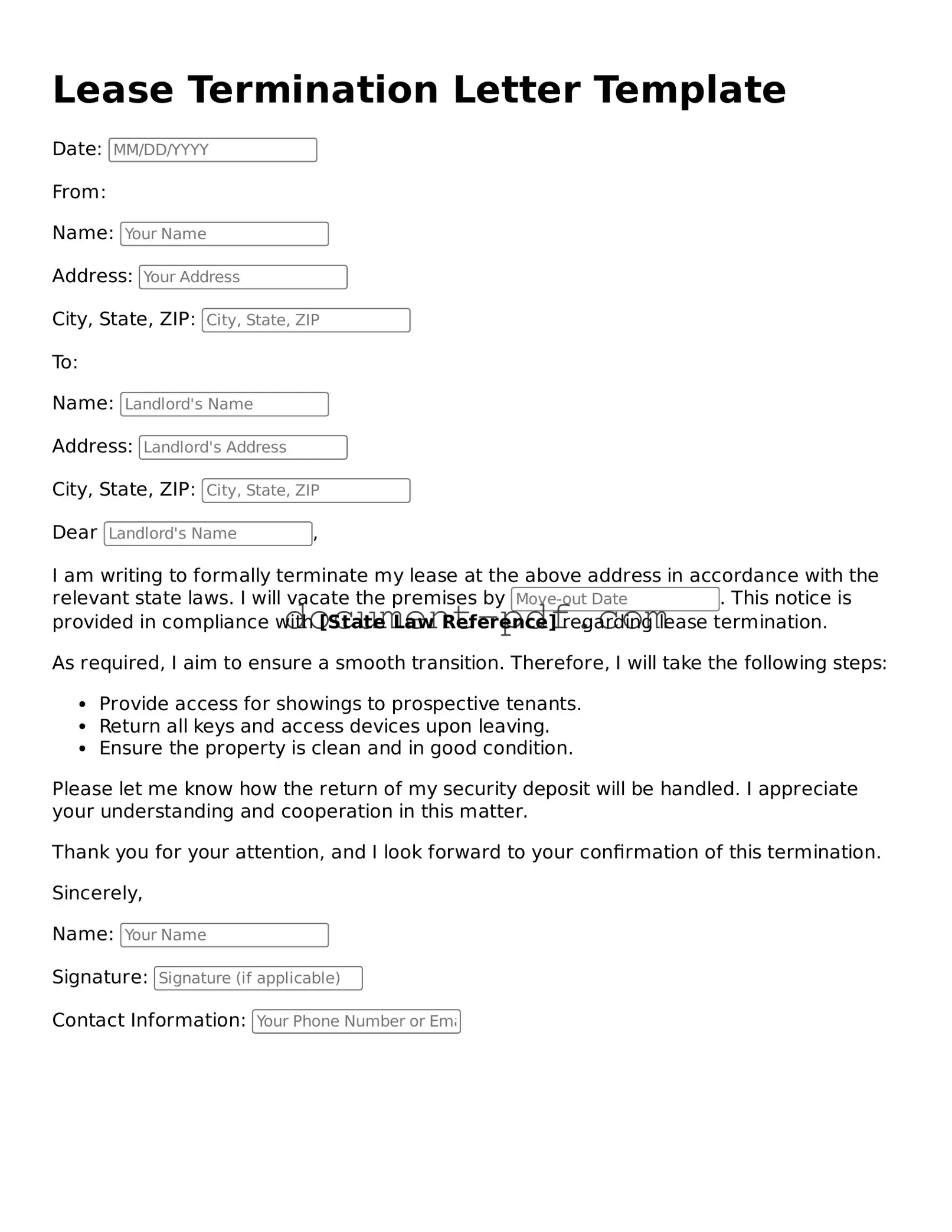A Lease Termination Letter serves as a formal notice to end a rental agreement, but it shares similarities with several other important documents in the realm of real estate and tenancy. One such document is the Eviction Notice. Like a Lease Termination Letter, an Eviction Notice informs a tenant that they must vacate the premises. However, while the Lease Termination Letter is typically initiated by the tenant or landlord to end a lease amicably, an Eviction Notice is often a legal action taken by the landlord due to a tenant's failure to comply with lease terms, such as non-payment of rent.
Another document closely related to the Lease Termination Letter is the Notice to Quit. This notice is used when a landlord wants to terminate a lease due to specific violations, such as lease breaches. Similar to the Lease Termination Letter, it provides a timeline for the tenant to vacate the property. However, the Notice to Quit is often more formal and may be required to follow specific legal procedures, depending on local laws.
The Rental Agreement itself is also similar to the Lease Termination Letter. This document outlines the terms and conditions of the rental arrangement. When a Lease Termination Letter is issued, it signifies that the terms of the Rental Agreement are no longer in effect. Both documents are essential for establishing the rights and responsibilities of both parties, but the Lease Termination Letter specifically communicates the intent to end the agreement.
A Move-Out Notice is another document that parallels the Lease Termination Letter. This notice is typically sent by the tenant to the landlord, indicating their intention to leave the property. Like the Lease Termination Letter, it serves as a formal notification, but it is often less detailed and may not include the same legal implications. It primarily focuses on the tenant's plans to vacate the property and can help facilitate the return of the security deposit.
The Security Deposit Return Letter is also similar in that it often follows the termination of a lease. After a tenant moves out, they may submit this letter to request the return of their security deposit. While the Lease Termination Letter ends the rental agreement, the Security Deposit Return Letter addresses the financial aspects of that agreement, ensuring that the tenant receives any funds owed to them after vacating the property.
The North Carolina Lease Agreement form serves as a legally binding contract between a landlord and a tenant, outlining the terms under which the tenant agrees to rent property from the landlord in North Carolina. This document is essential for establishing clear expectations and responsibilities for both parties throughout the rental period. Its contents cover a wide range of details including, but not limited to, rent amount, payment schedule, and lease duration. For more information, you can refer to the Rental Contract.
Lastly, a Sublease Agreement can be compared to the Lease Termination Letter in terms of its implications for the original lease. When a tenant decides to sublease their rental unit, they must often notify their landlord, similar to how a Lease Termination Letter notifies the landlord of a tenant's intent to leave. Both documents involve the transfer of rights and responsibilities, but a Sublease Agreement introduces a new tenant into the mix, while a Lease Termination Letter signifies the end of the current lease relationship.
